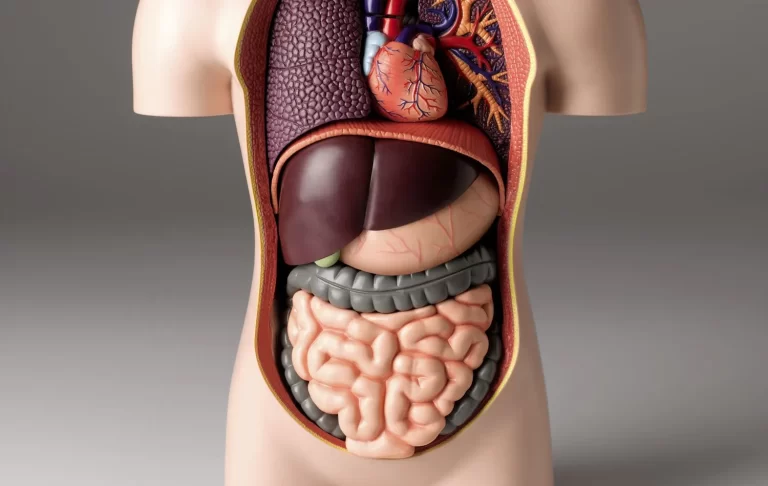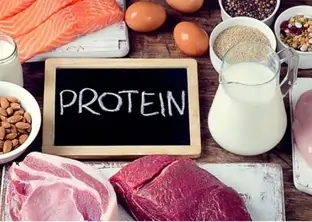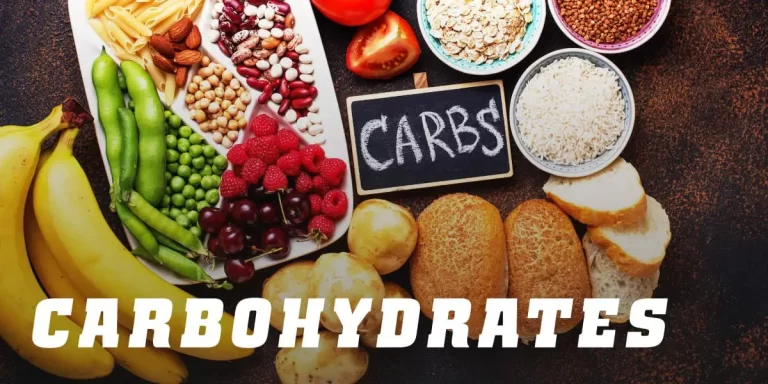Magnesium
What is Magnesium?
Magnesium is an atomic number twelve element with the symbol Mg. It is a low-density, low melting point, and highly reactive metal that has a glossy gray color.
Similar to other alkaline earth metals (group 2 of the periodic table), it is virtually always in the +2 oxidation state and only occurs naturally in combination with other elements.
It easily combines with air to create a thin layer of magnesium oxide passivation, which stops the metal from corroding any further.
The liberated metal emits a bright white flame. Magnesium salts extracted from brine are electrolyzed to produce the metal primarily.
It is mostly employed as a component in aluminum-based alloys that are lightweight and robust since it is less dense than aluminum.
Magnesium is created in the universe by the successive addition of three helium nuclei to a carbon nucleus in big, aging stars.
A large amount of magnesium is released into the interstellar medium when these stars explode as supernovae, where they may recombine to form new star systems.
Magnesium makes up 13% of the planet’s mass and a sizable portion of the planet’s mantle. It is the eighth most prevalent element in the Earth’s crust and the fourth most common element overall (after iron, oxygen, and silicon).
After sodium and chlorine, it is the element that is dissolved in seawater in the third most amount.
All cells and almost 300 enzymes require this element, which is the tenth most prevalent element in the human body by mass. ATP, DNA, and RNA are examples of polyphosphate molecules with which magnesium ions interact.
Magnesium ions are necessary for hundreds of enzymes to function. Magnesium compounds are used medicinally as ordinary antacids and laxatives (milk of magnesia), as well as to regulate blood vessel spasms or aberrant nerve excitation in diseases like eclampsia.
Characteristics
Physical properties
Gray-white and lightweight, elemental magnesium has a density that is two-thirds that of aluminum.
Of all the alkaline earth metals, magnesium has the lowest melting point (923 K, or 650 °C) and the lowest boiling point (1,363 K, or 1,090 °C).
Magnesium that is pure polycrystalline is brittle and fractures readily along shear bands. When alloyed with tiny amounts of other metals, like 1% aluminum, it becomes much more pliable.
Reducing the grain size of polycrystalline magnesium to approximately 1 micron or less can also greatly increase its malleability.
Magnesium interacts with water when finely powdered to form hydrogen gas:
Mg(s) + 2H2O(g) → Mg(OH)2(aq) + H2(g) + 1203.6 kJ/mol
Because magnesium hydroxide accumulates on the surface of the magnesium metal and prevents further reaction, this reaction is, nevertheless, far less spectacular than the interactions of the alkali metals with water.
Chemical properties
General Chemistry
Magnesium tarnishes slightly in the presence of air, but unlike the heavier alkaline earth metals, it does not require an oxygen-free storage environment since it is shielded from the elements by a thin coating of oxide that is fairly impermeable and challenging to remove.
Magnesium reacts directly with oxygen or air at room pressure to generate solely the “normal” oxide MgO.
But, this oxide can also be mixed with hydrogen peroxide to create magnesium peroxide (MgO2), which can then be further reacted with ozone at low temperatures to create magnesium superoxide (Mg(O2)2).
While it reacts with water at ambient temperature, magnesium reacts with group 2 metals significantly more slowly than calcium does.
Hydrogen bubbles gradually form on the metal’s surface when it is submerged in water; this reaction occurs considerably more quickly when magnesium powder is used.
Higher temperatures also speed up the process.
A magnesium-based engine can be powered by the reversible reaction of magnesium with water to store energy.
Similar to how HCl reacts with aluminum, zinc, and many other metals, magnesium likewise reacts exothermically with most acids, including hydrochloric acid (HCl), generating metal chloride and hydrogen gas in the process.
Flammability
Magnesium is difficult to ignite in bulk or mass, but it is extremely combustible when powdered or shaved into thin strips.
Although the flame height above the burning metal is typically less than 300 mm (12 in), the flame temperatures of magnesium and magnesium alloys can exceed 3,100 °C (5,610 °F).
Such fires are challenging to put out once they start because they resist various substances that are typically employed to do so.
The combustion process continues in nitrogen, generating magnesium nitride, in carbon both in water (producing magnesium oxide and hydrogen, which also combusts due to heat in the presence of extra oxygen) and in dioxide (generating magnesium oxide and carbon).
During the firebombing of cities in World War II, this property was utilized to create incendiary weapons.
At that time, the only effective civil defense was to hide a blazing flare with dry sand to keep the environment from burning.
Thermite, a powdered combination of aluminum and iron oxide that only ignites at extremely high temperatures, can also be ignited using magnesium.
Organic Chemistry
In organic chemistry, organomagnesium compounds are widely used. Typically, one can locate them as Grignard reagents.
Grignard reagents can be produced by magnesium reacting with haloalkanes. Phenyl and ethyl magnesium bromide are two examples of Grignard reagents.
The Grignard reagents act as a type of common nucleophile, targeting electrophilic groups like the carbon atom found in a carbonyl group’s polar bond.
Magnesium anthracene with magnesium is a well-known organomagnesium reagent that goes beyond Grignard reagents, generating a 1,4-bridge over the core ring.
It serves as a source of magnesium that is extremely active. The butadiene dianion is derived from the associated butadiene-magnesium adduct.
Low-valent magnesium compounds are another type of magnesium that can be found in organic chemistry.
These compounds mainly produce magnesium diatomic ions in the +1 oxidation state, although more recently, zero oxidation state or a combination of +1 and zero states have also been seen.
These substances are used artificially as sources of nucleophilic metal atoms and as reducing agents.
Source of Light
Magnesium emits a dazzling white light with strong ultraviolet wavelengths when it burns in the air.
Early on in the history of photography, subjects were illuminated with magnesium powder, sometimes known as flash powder.
Later, electrically ignited single-use photography flashbulbs were made of magnesium filament.
When a bright white light is needed for fireworks or marine flares, magnesium powder is employed.
In addition, it was employed for a variety of dramatic effects, including flashes from pistols, lightning, and supernatural apparitions.
Detection in solution
Ammonium hydroxide, ammonium chloride, and monosodium phosphate added to an aqueous or diluted HCl solution of the salt will reveal the presence of magnesium ions.
The presence of magnesium ions is indicated by the production of a white precipitate.
Another option is to utilize azo violet dye, which turns deep blue when an alkaline solution of magnesium salt is present. The adsorption of azo violet by Mg(OH)2 is what gives the color.
Occurrence
By mass, magnesium ranks eighth in the crust of the Earth, whereas in terms of molarity, it is tied with iron for seventh position.
It can be found in sizable magnesite, dolomite, and other mineral formations as well as in mineral fluids that contain soluble magnesium ions.
More than sixty minerals contain magnesium, but only dolomite, magnesite, brucite, carnallite, talc, and olivine are significant from a commercial standpoint.
Due to the Mg2+ cation’s relative abundance in seawater—roughly 1/8 the mass of sodium ions in a given sample—seawater and sea salt are desirable industrial sources of magnesium.
Seawater is mixed with calcium hydroxide to create a magnesium hydroxide precipitate, which is then used to extract the magnesium.
MgCl2 + Ca(OH)2 → Mg(OH)2 + CaCl2
Because it is insoluble in water, magnesium hydroxide, also known as brucite, can be filtered out and combined with hydrochloric acid to create concentrated magnesium chloride.
Mg(OH)2 + 2 HCl → MgCl2 + 2 H2O
Magnesium is produced via electrolysis from magnesium chloride.
Forms
Alloys
Compared to 50 million tonnes of aluminum alloys, less than one million tonnes of magnesium alloys were consumed annually as of 2013. The propensity of magnesium alloys to corrode, creep at high temperatures, and catch fire has historically restricted their application.
Corrosion
Iron, nickel, copper, or cobalt greatly promotes corrosion in magnesium alloys. These metals precipitate as intermetallic complexes when present in concentrations greater than trace quantities.
The precipitate locations serve as active cathodic sites that decrease water, which results in the loss of magnesium.
Corrosion resistance is increased by regulating the amount of these metals. An adequate amount of manganese counteracts the corrosive effects of iron.
This necessitates exact composition control, which raises expenses. By including a cathodic poison, atomic hydrogen is trapped inside a metal’s structure.
This stops free hydrogen gas from forming, which is necessary for corrosive chemical reactions. The magnesium corrosion rate in a salt solution is decreased by roughly ten times when one part arsenic to three hundred is added.
High-temperature creep and flammability
By alloying with zinc and rare-earth metals, magnesium’s tendency to creep—gradually deform—at high temperatures is significantly diminished.
A tiny quantity of calcium in the alloy greatly reduces flammability. Rare-earth elements could be used to create magnesium alloys that can withstand temperatures over the liquidus of magnesium and, in certain situations, even near its boiling point without catching fire.
Compounds
Magnesium hydroxide (milk of magnesia), magnesium oxide, magnesium sulfate, and magnesium sulfate heptahydrate (Epsom salts) are among the many compounds that magnesium produces and are crucial to both industry and biology.
Isotopes
There are three stable isotopes of magnesium: 24mg, 25mg, and 26mg. According to the above table of isotopes, all are found in nature in considerable quantities.
24mg makes about 79% of magnesium. Several nuclear power facilities produced the radioactive isotope 28mg in the 1950s and 1970s for use in scientific research.
The usage of this isotope was constrained by shipping times and its comparatively short half-life of 21 hours.Similar to aluminum, the nuclide 26Mg has found use in isotopic geology.
With a half-life of 717,000 years, 26Mg is a radiogenic daughter product of 26Al. Some carbonaceous chondrite meteorites feature Ca-Al-rich inclusions that contain excessive amounts of stable 26Mg.
Its parent 26Al decay in the inclusions is responsible for this abnormal abundance, leading scientists to assume that these meteorites formed in the solar nebula prior to the 26AI decay.
These are some of the Solar System’s oldest objects, and they have preserved details about its early past.Plotting 26mg/24mg versus an Al/Mg ratio is standard practice.
The Al/Mg ratio plotted in an isochron dating plot is 27Al/24Mg. The isochron’s slope, which shows the sample’s original 26Al/27Al ratio at the moment the systems split apart from a common reservoir, has no bearing on age.
Production
In 2017, the total production around the world was 1,100 kt, with the majority coming from China (930 kt) and Russia (60 kt).
Even as recently as 1995, the United States accounted for 45% of global output of this metal, making it the world’s leading provider during the 20th century.
US Magnesium, a Renco Group business in Utah that was founded from the now-defunct Magcorp, is the only remaining US producer with a 7% market share after China gained control of the Pidgeon process.
As a result of a government initiative to decrease energy availability for industrial industries, China reduced its output of magnesium in September 2021, which resulted in a notable price spike.
Pidgeon process
China obtains its metal nearly exclusively using the silicothermic Pidgeon method, which involves reducing the oxide at high temperatures with silicon, which is frequently supplied by a ferrosilicon alloy and in which the iron is only a bystander in the processes. At about 2300 °C, the procedure can also be performed with carbon:
2MgO(s) + Si(s) + 2CaO(s) → 2Mg(g) + Ca2SiO4(s)
MgO(s) + C(s) → Mg(g) + CO(g)
Dow process
Magnesium is mostly produced in the US by the Dow process, which involves electrolyzing fused magnesium chloride from brine and seawater.
After adding lime (calcium oxide) to a saline solution containing Mg2+ ions, magnesium hydroxide precipitates and is collected.
Mg2+(aq) + CaO(s) + H2O → Ca2+(aq) + Mg(OH)2(s)
After treating the hydroxide with hydrochloric acid and boiling the resultant mixture, the hydroxide is transformed into a partial hydrate of magnesium chloride:
Mg(OH)2(s) + 2 HCl → MgCl2(aq) + 2H2O(l)
After that, the melted salt is electrolyzed. The Mg2+ ion is converted to magnesium metal at the cathode by two electrons:
Mg2+ + 2 e− → Mg
To finish the circuit, each pair of Cl− ions is oxidized to chlorine gas at the anode, releasing two electrons in the process:
2 Cl−→ Cl2 (g) + 2 e−
YSZ process
Solid oxide membrane technology is a novel technique that uses the electrolytic reduction of magnesium oxide.
The Mg2+ ion is converted to magnesium metal at the cathode by two electrons. Zirconia stabilised with yttria is the electrolyte (YSZ).
Metal is liquid at the anode. O2− is oxidized at the YSZ/liquid metal anode.
The liquid metal anode is surrounded by a graphite layer, where carbon and oxygen combine to generate carbon monoxide.
The only gas produced at the anode is oxygen when silver is utilized as the liquid metal anode; no carbon nor hydrogen reductants are required.
According to reports, compared to the electrolytic reduction process, this technology offers a 40% cost per pound reduction.
History
The Greek term for places associated with the Magnetes tribe is the source of the name magnesium.
These locations could be Magnesia ad Sipylum, which is now in Turkey, or Magnesia, a district in Thessaly.
It is connected to the minerals manganese and magnetite, which were also found in this region and needed to be distinguished as distinct compounds.
See manga for this historical account.A farmer in Epsom, England, tried to provide his cows with water from a nearby well in 1618.
The farmer discovered that the water tended to heal scrapes and sores, but the cows refused to drink due to its bitter flavor.
The material that was left over after the water evaporated was dubbed Epsom salts, and word of this spread.
Eventually, it was identified as MgSO4 7 H2O, or hydrated magnesium sulfate.Sir Humphry Davy separated the metal for the first time in England in 1808.
On a combination of magnesia and mercuric oxide, he performed electrolysis. In 1831, Antoine Bussy organized it logically.
‘Magnium’ was Davy’s original proposed moniker, but the majority of European languages currently use it.
Uses as a metal
After aluminum and iron, magnesium is the structural metal that is used the most frequently. The following are the primary uses of magnesium.
Die-casting (alloyed with zinc), aluminum alloys, sulfur removal in the production of iron and steel, and titanium production via the Kroll process.
Magnesium is utilized in alloys and lightweight materials. For example, it possesses a very high specific strength when infused with silicon carbide nanoparticles.
Magnesium was historically one of the primary metals used in aeronautical construction. German military aircraft used it extensively in World War II and as early as World War I.
The magnesium alloy was dubbed “Elektron” by the Germans; this moniker is still in use today. Because of the risk of fire and corrosion, magnesium was often only used in engine-related components in the commercial aerospace industry.
The significance of fuel efficiency has led to an increase in the use of magnesium alloys in aircraft in the twenty-first century.
Magnesium alloys may be able to replace steel and aluminum alloys in several applications because to recent advancements in metallurgy and manufacturing.
Aircraft
- The Wright R-3350 Duplex Cyclone aircraft engine, manufactured by Wright Aeronautical during World War II, had a magnesium crankcase.This caused a significant issue for the early Boeing B-29 Superfortress heavy bombers when an engine fire ignited the crankcase during flight.The ensuing combustion might split the wing spar from the fuselage since it reached temperatures of up to 5,600 °F (3,100 °C).
Automotive
- An early Mercedes-Benz 300 SLR was built with the alloy Elektron in its bodywork. These vehicles competed in the 1955 World Sportscar Championship, winning both the Mille Miglia and Le Mans, where one of the cars was involved in the disaster that year when burning pieces of Elektron were thrown at onlookers.
- Due to the weight benefit, Porsche continues to use magnesium alloys for its engine blocks, as evidenced by the usage of these alloys in the 917/053 that won the 1971 Le Mans.
- Magnesium has long been used in engine parts by the Volkswagen Group.
- Mitsubishi Motors makes their paddle shifters out of magnesium.
- In the N52 engine, BMW used magnesium alloy blocks, with a high-temperature magnesium alloy (AJ62A) around the cooling jackets and an aluminum alloy insert for the cylinder walls. Between 2005 and 2011, the engine was utilized globally in a variety of 1, 3, 5, 6, and 7 series models, in addition to the Z4, X1, X3, and X5.
- Chevrolet’s 2006 Corvette Z06 was built with the magnesium alloy AE44.
Recent advancements in high-temperature low-creep magnesium alloys are represented by AJ62A and AE44. Adding mischmetal or calcium, for example, can cause intermetallic precipitates to develop at the grain boundaries of these alloys.
Electronics
Magnesium is used to make mobile phones, laptops, tablets, cameras, and other electronic components because of its low density and outstanding mechanical and electrical qualities. Because of its low weight, it was employed as a high-end feature in certain laptops from 2020.
Magnesium materials in medicine
According to recent research, magnesium materials have a significant potential for development as resorbable implant materials for the human body (such as stents).
Silver and rare earth elements are being studied in addition to the common magnesium alloy components of calcium and zinc.
When utilized as an implant material for a brief duration, the contact corrosion behavior is a clear benefit because, after a predetermined amount of time, it would dissolve risk-free.
By doing this, the dangers and expenses associated with removing the implant would be eliminated.
Other
Magnesium has many applications since it is easily accessible and generally harmless.
- The autoignition temperature of magnesium ribbon is roughly 473 °C (746 K; 883 °F). Magnesium is combustible, burning at a temperature of about 3,100 °C (3,370 K; 5,610 °F). When it burns, it emits a strong, white light. Magnesium is a valuable tool for starting emergency fires because of its high combustion temperature. Additional applications include trick birthday candles, pyrotechnics, flash photography, flares, and fireworks sparklers. Thermite and other substances that need a high ignition temperature are also frequently ignited with magnesium. Magnesium is still employed in combat as an incendiary material.
- To create Grignard reagents, which are helpful in organic synthesis, in the form of turnings or ribbons.
- as a supplement to traditional propellants and to cause nodular graphite to form in cast iron.
- to remove the salts from uranium and other metals by using them as a reducing agent.
- as a galvanic sacrificial anode to safeguard water heaters, subterranean tanks, pipelines, buried buildings, and boats.
- combined with zinc to create zinc sheet, which is then used for roofing, walls made of dry cell batteries, and photoengraving plates in the printing sector.
- As a metal, this element’s principal use is as an alloying additive to aluminium with these aluminium-magnesium alloys being used mainly for beverage cans, sports equipment such as golf clubs, fishing reels, and archery bows and arrows.
- Although the phrase “mag wheels” is sometimes used incorrectly to refer to aluminum wheels, “mag wheels” are specialty, premium automotive wheels made of magnesium alloy. Magnesium has been used to make engine and body parts by numerous auto and aviation manufacturers.
- Magnesium batteries are currently being researched for rechargeable batteries and have been marketed as primary batteries.
Safety precautions
Because they are extremely combustible in their pure state when melted, as well as in powder or ribbon form, magnesium metal and its alloys can pose an explosive risk.
Water and burning or molten magnesium react aggressively. UV filters (like those used by welders) and safety glasses with eye protection are used when handling powdered magnesium since burning magnesium releases ultraviolet radiation that can cause irreversible damage to an eye’s retina.
Magnesium can reduce water and produce hydrogen gas, which is extremely flammable:
Mg (s) +2 H2O (l) →Mg(OH)2 (s)+H2 (g)
Water cannot, therefore, put out magnesium fires. The resulting hydrogen gas makes the flames more intense. Smothering surfaces with dry sand works well on generally level and flat surfaces.
Carbon dioxide and magnesium combine exothermically to produce magnesium oxide and carbon:
2Mg + CO2 → 2MgO + C (s)
Therefore, magnesium flames are fueled by carbon dioxide instead of being put out.
A Class D dry chemical fire extinguisher can be used to put out burning magnesium, or the fire can be put out by covering it with sand or magnesium foundry flux to cut off its air supply.
Useful compounds
In order to produce iron, steel, nonferrous metals, glass, and cement, furnace linings are lined with magnesium compounds, mainly magnesium oxide (MgO).
Chemical, building, and agricultural industries also employ magnesium oxide and other magnesium compounds.
In fire-resistant cables, calcined magnesium oxide serves as an electrical insulator.
Researchers are looking into using magnesium hydride to store hydrogen.
A particularly helpful tool for making alcohols is the Grignard reagent, which is produced when magnesium combines with an alkyl halide.
Because magnesium is a part of chlorophyll, it can be found in a variety of foods, fertilizers, and microbial culture media.
Paper is manufactured using magnesium sulfite (sulfite method).
To make wood used in building fireproof, magnesium phosphate is used.
To make wood used in building fireproof, magnesium phosphate is used.Textiles are moth-proofed using magnesium hexafluorosilicate.
Biological roles
Mechanism of action
Because of the significant interaction between phosphate and magnesium ions, magnesium is necessary for the basic chemistry of nucleic acids in all known living creatures’ cells.
For their catalytic function, more than 300 enzymes—including those that utilize or generate ATP and those that utilise alternative nucleotides to synthesise DNA and RNA—need magnesium ions. Normally, the ATP molecule is present in a chelate that includes a magnesium ion.
Nutrition
Diet
Vegetables, grains, nuts, chocolate, and spices are excellent providers of magnesium. Spinach and other green leafy vegetables are excellent sources of magnesium.
Dietary recommendations
The recommended daily intake of magnesium in the UK is 270 mg for women and 300 mg for men. In the United States, 400 mg is the Recommended Dietary Allowance (RDA) for males ages 19 to 30 and 420 mg for women ages 19 to 30 and 320 mg for seniors.
Supplementation
There are several dietary supplements and pharmacological formulations of magnesium available.
Due to its high magnesium concentration per weight, magnesium oxide is one of the most prevalent forms found in dietary supplements; yet, in two human trials, it was found to be less bioavailable than magnesium citrate, chloride, lactate, or aspartate.
Metabolism
There are 22–26 grams of magnesium in an adult body, of which 60% are found in the skeleton, 39% are found intracellularly (20% in skeletal muscle), and 1% are found extracellularly.
Usually, serum levels range from 0.7 to 1.0 mmol/L or 1.8 to 2.4 mEq/L. Even in cases where intracellular magnesium levels are low, serum magnesium levels may remain normal.
Differentiating renal excretion and gastrointestinal absorption are the mechanisms that keep the serum magnesium level constant.
There is a correlation between intracellular potassium and magnesium. Depending on the starting level, increased magnesium can either create hypocalcemia or avoid hypercalcemia by lowering calcium.
Phosphate, phytate, and gut fat levels all have an inhibitory effect on magnesium absorption, as does a low or high protein diet.
Sweat and urine include absorbed magnesium expelled from the body, while feces contain unabsorbed magnesium from diet.
Detection in serum and plasma
Although urine and fecal magnesium content, as well as serum and erythrocyte magnesium concentrations, can be used to measure magnesium status, intravenous magnesium loading assays are a more practical and accurate method.
Deficiency is indicated by a retention of 20% or more of the administered quantity. As of 2004, magnesium lacked an established biomarker.
The levels of magnesium in serum or plasma can be checked for safety and effectiveness in patients receiving the medication therapeutically, to confirm the diagnosis in possible poisoning cases, or to support the forensic investigation in the event of a fatal overdose.
Even with normal serum magnesium levels, newborns whose mothers received parenteral magnesium sulfate during birth may show signs of toxicity.
Deficiency
Hypomagnesemia, or low plasma magnesium, affects 2.5–15% of people in the general population. 48 percent of Americans ingested less magnesium in 2005–2006 than was advised by the Dietary Reference Intake.
Proton-pump inhibitor antacid treatment, an enhanced intracellular shift, and increased renal or gastrointestinal loss are additional factors.
While most don’t show any symptoms, there may be signs of neuromuscular, cardiovascular, or metabolic problems.
A magnesium shortage is frequently linked to alcoholism. Diabetes mellitus type 2, fasciculation, hypertension, and metabolic syndrome are linked to persistently low serum magnesium levels.
Therapy
- The 2006 ACC/AHA/ESC Guidelines for Management of Patients With Ventricular Arrhythmias and the Prevention of Sudden Cardiac Death recommend intravenous magnesium for the treatment of patients with digoxin-induced arrhythmias and for individuals who have long QT syndrome and ventricular arrhythmia linked to torsades de pointes.
- Intravenous magnesium sulfate is used to treat eclampsia and pre-eclampsia.
- Depending on the severity of the insufficiency, oral or parenteral magnesium therapy can reverse hypomagnesemia, particularly that brought on by alcoholism.
- There is insufficient data to suggest that taking supplements of magnesium can help prevent or treat migraines.
Listed according to the kind of magnesium salt, further medicinal uses consist of:
- As the heptahydrate known as Epsom salts, magnesium sulfate is utilized as a laxative, highly soluble fertilizer, and bath salt.
- Laxatives and antacids made from milk of magnesia include magnesium hydroxide suspended in water.
- Oral magnesium supplements include magnesium chloride, oxide, gluconate, malate, orotate, glycinate, ascorbate, and citrate.
- Antiseptics include magnesium borate, magnesium salicylate, and magnesium sulfate.
- The moderate calming properties of magnesium bromide are attributed to the bromide, not the magnesium.
- White, lubricating, and somewhat combustible is magnesium stearate powder. It is employed in pharmaceutical technology to keep tablets from adhering to machinery during the process of compressing components into tablet shape.
- Athletes like gymnasts, weightlifters, and climbers utilize magnesium carbonate powder to reduce sweating on their palms, avoid sticking, and enhance their grip when using gymnastic apparatus, lifting bars, and climbing rocks.
Overdose
Since the kidneys quickly filter excess magnesium in the blood, overdosing from food sources alone is unlikely and is more likely when renal function is compromised.
Despite this, a small child has died from megadose therapy, while a lady and a young girl with healthy kidneys have experienced severe hypermagnesemia.
The most typical overdose symptoms are diarrhoea, vomiting, and nausea; other symptoms include hypotension, disorientation, decreased heartbeat and breathing, mineral deficiency, coma, cardiac arrhythmia, and cardiac arrest death.
Function in plants
Chlorophyll, which is necessary for photosynthesis, is synthesized by plants using magnesium.
The iron in the center of the porphyrin ring in heme and the magnesium in the center of the porphyrin ring in chlorophyll serve comparable purposes.
Late-season yellowing between leaf veins in plants, especially in older leaves, is caused by a magnesium deficit that can be remedied by either adding crushed dolomitic limestone to the soil or epsom salts, which are quickly leached.
FAQ
What magnesium does for the body?
More than 300 enzyme systems in the body, including those that control blood glucose levels, blood pressure, muscle and nerve function, and protein synthesis, depend on magnesium as a cofactor [1-3]. The processes of glycolysis, oxidative phosphorylation, and energy production all require magnesium.
How is magnesium used?
Magnesium is utilized in goods including power tools, laptops, luggage, automobile seats, and cameras that benefit from being lightweight. To get rid of sulfur, it is also added to molten steel and iron. Magnesium is utilized in flares, fireworks, and sparklers because it burns brightly and ignites readily in the air.
What is magnesium used to treat?
The most common uses of magnesium include treating low magnesium levels, treating pre-eclampsia and eclampsia, treating constipation, treating heartburn, and treating torsades de pointes, a condition where the heartbeat is erratic.
Is magnesium a blood thinner?
Because of its powerful effects on blood pressure, platelet aggregation, inflammation, fibrin formation inhibition, and calcium moderation at higher concentrations, magnesium is known as a natural blood thinner.
Which fruit is rich in magnesium?
Avocados: 58 mg of magnesium is found in one full avocado. Bananas: 32 mg of magnesium are found in one medium banana. Papaya: 33 mg of magnesium are found in one small papaya. A cup of blackberries has 29 milligrams of magnesium.
How can I get 100% magnesium daily?
Greens, nuts, seeds, dry beans, whole grains, wheat germ, and wheat and oat bran are generally good sources of magnesium. For adult men, a daily intake of 400–420 mg of magnesium is advised. For adult women, the recommended daily limit is 310–320








10 Comments